Paving the Path to Future-Proof Land-Based Systems: Innovation, Risk, and Collaboration
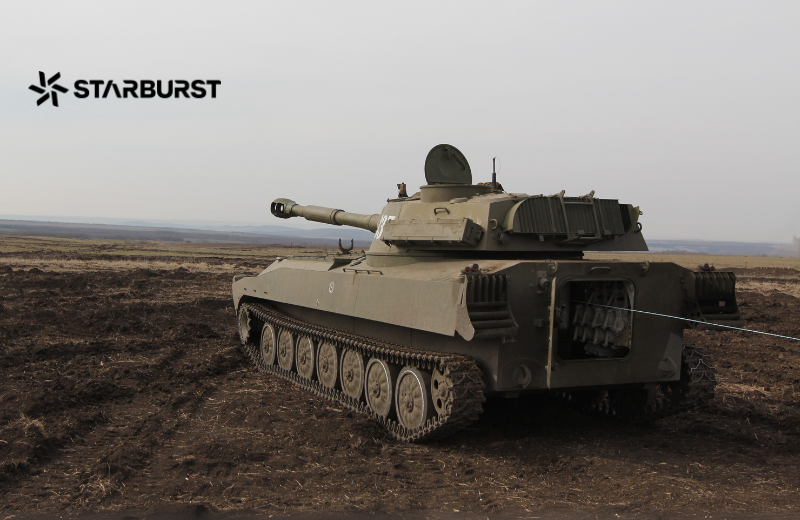
Military land forces are under siege due to new and emerging threats, such as precision strikes and continuous battlefield surveillance against personnel and assets leading to limited manoeuvrability on the battlefield. This imbalance is exacerbated by the rising use of economically asymmetric threats (i.e., “low-cost threats” or “low-threshold threats”), such as drones and guided munitions, that can neutralize exquisite systems at a fraction of the cost—in some cases as much as 10-30 times less… Economically asymmetric threats, coupled with the limited battlefield manoeuvrability due to adversarial surveillance, raises questions about the future economic and operational sustainability of traditional land-based systems. Therefore, land forces must innovate and prioritize adaptability and resilience in evolving combat environments.
Historically, land-based systems have been shaped by both technological advances and lessons from past conflicts. Everything from forward artillery to mechanized breakthrough systems (e.g., self-propelled artillery (SPA), infantry fighting vehicles (IFVs) and main battle tanks (MBTs)) have consistently evolved to meet battlefield demands. To illustrate the evolution of mechanized assets, this article will focus on dynamic Combat – and Tactical Systems (Figure 1).
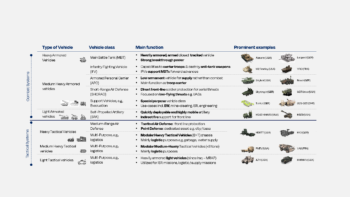 Figure 1: Overview of dynamic land-based systems
Figure 1: Overview of dynamic land-based systems
Combat Systems include heavily armoured units like MBTs for breakthrough or penetrative operations, IFVs for troop transport and light combat, and SPAs for indirect fire support. Tactical Systems, primarily operating in rear areas, handle logistics, ISR, and regional air defense roles. Both categories are now being reshaped by new threats such as low-cost unmanned aerial systems (UAS) and electronic warfare (EW).
The evolution of land-based systems has consistently been influenced by technological advancements and lessons learned from past conflicts. Contemporary conflicts such as the Russian invasion of Ukraine and the Azerbaijan offensive in Nagorno-Karabakh highlight new challenges and the implications of large-scale, low-cost, high-tech warfare. The next section explores how these conflicts shape the development of military systems and tactics, focusing on the six high-priority challenges facing NATO’s land forces today.
I. Influence of Conflicts on System Developments
The 2000s “War on Terror” marked the last major capability development push in NATO armies. These conflicts featured low-tech adversaries relying on guerilla tactics and low-cost equipment (e.g. RPGs, Anti-Tank Guided Missiles) to counter technologically superior forces. However, contemporary conflicts present entirely new challenges. These large-scale, high-tech confrontations involve actors employing advanced technologies and are reshaping battlefield dynamics.
Figure 2 highlights six critical challenges impacting NATO’s land-based systems today. Among them, low-cost Unmanned Aerial Systems (UAS) represent a significant threat through diverse mission profiles such as ISR and as vehicles for hosting Improvised Explosive Device (IEDs) payloads. These drones are difficult to detect and neutralize due to their size and low altitude. Pairing UAS with advanced sensors and data analysis creates a highly transparent battlefield, improving target acquisition for systems like SPAs (Self-Propelled Artillery). This transparency can increase casualties and asset losses, forcing military leaders to limit the deployment of high-value assets such as MBTs and IFVs near the frontline. Additional advanced systems like autonomous unmanned ground vehicles are facing deployment challenges due to low technology readiness and low volume leading to expensive training and repair costs.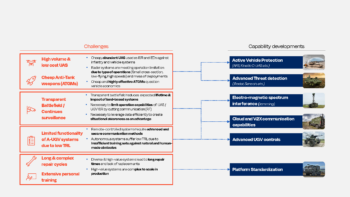
Figure 2: Overview of land-based system challenges and resulting capability developments
To counter these threats, new technologies are necessary for land-based forces:
- Active protection systems: Designed to neutralize both Anti-Tank Guided Missiles (ATGMs) and UAS threats to protect high value systems (Soft / Hard kill)
- Advanced threat detection: Identifying small cross-section, low-flying and high-volume threats (Multi-band, layered radars coupled with fused sensor data e.g. accousitic, RF, imagery)
- Spectrum dominance & resilient communication: Disrupt enemy unmanned systems connectivity while ensuring secure, jam-resistant communications between vehicle-to-vehicle (V2V) and cloud-based networks
- Advanced Unmanned Ground Vehicle (UGV) controls: Enabling autonomous navigation of complex environment using minimal training data
- Platform standardization: Reducing maintenance and procurement costs while improving system readiness e.g. US Army Common Tactical Truck (CTT) program
As outlined above, the challenges facing land-based systems, particularly high-value assets like MBTs and IFVs, have reshaped their roles in modern warfare. In contrast, systems like SPAs and air defense platforms have proven highly effective.
II. Effective Systems in Modern Conflicts
Self-Propelled Artillery (SPA) and Air Defense Systems have demonstrated exceptional effectiveness in modern conflicts, as highlighted in Figure 3.
For SPA, systems like the M142 HIMARS and the Caesar MkII Howitzer have excelled during the Ukraine conflict. HIMARS enables deep-strike capabilities against high-value targets up to 300km away, while the Caesar delivers precise fire support up to 50km from the frontline. Both benefit from advancements such as battlefield transparency, enabled by UAS ISR, for enhanced target acquisition, coupled with “scoot-and-shoot” capabilities that reduce vulnerability.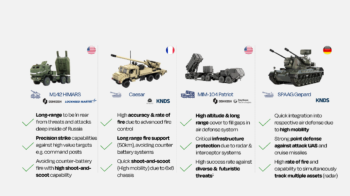
Figure 3: Highly effective land-based systems based on Ukraine conflict
In Air Defense, high-to-medium-range systems like the MIM-104 Patriot have proven to be effective against sophisticated threats such as precision munitions, specifically air/surface-to-surface missiles, while mobile systems like the Gepard focus on countering low-cost aerial threats like UAS. The Gepard is particularly effective due to its rapid-fire capabilities, low cost, and seamless integration into broader air defense strategies.
The effectiveness of systems such as Self-Propelled Artillery (SPA) and Air Defense platforms in recent conflicts underscores the importance of continuous technological innovation (e.g., high mobility, advanced fire control). To address emerging challenges and maintain battlefield superiority, the defense industry is actively developing key technologies that enhance system resilience, adaptability, and operational efficiency. These advancements span critical areas such as innovative sensors and response systems, enhanced firepower and protection, cost-effective production methodologies, and unmanned operations.
III. Key Technology Trends for Land-Based Defense Systems
Four critical areas of innovation to address the challenges of modern conflicts have emerged for land-based systems. These include the development of high-volume, low-cost systems, integrated sensors and response systems, enhanced firepower and protection, and unmanned operations, as illustrated in Figure 4.
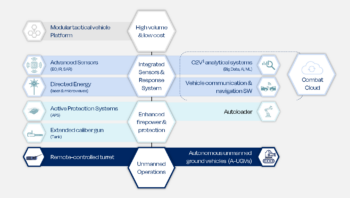
Figure 4: Overview of ongoing key technology developments for land-based systems (non-exhaustive)
- High-volume, low-cost systems are essential for maintaining readiness during prolonged conflicts, where high vehicle losses and long repair cycles strain supply chains. Modular and standardized platforms are common for combat but only emerging for tactical vehicles, such as the Next Generation Combat Vehicle (NGCV AMPV) and the Joint Light Tactical Vehicle (JLTV), address this challenge by reducing fleet complexity and lifecycle costs. Their multi-role capabilities enable armies to replace numerous specialized vehicles with flexible, scalable solutions.
- Integrated sensors and response systems play a pivotal role in enhancing situational awareness and operational effectiveness. Advanced sensors such as electro-optical (EO), infrared (IR), and synthetic-aperture radar (SAR) improve target acquisition, situational awareness and hence and autonomy. Complementary directed energy systems, including high-energy lasers (HEL) and high-power microwaves (HPM), provide critical counter-UAS capabilities, either by physically neutralizing components or disrupting communication systems. These advancements are increasingly connected through the Combat Cloud, which integrates battlefield data across layers to improve decision-making and operational flexibility.
- Enhanced firepower and protection are critical for countering advanced threats (armour, range, firepower etc.) on the battlefield. Therefore, extended-caliber guns transitioning from 120mm to 130/140mm, enhance penetration against advanced armour. Further improved autoloader systems increase firing rates while relocating crews into heavily armoured hulls for greater protection. Active Protection Systems (APS) are crucial for neutralizing threats like ATGMs and high-volume UAS, ensuring survivability in high-risk environments.
- Unmanned operations represent a transformative trend, enhancing efficiency and soldier safety in a multi-step approach – at subsystem and system level. Remote-controlled turrets, currently used for auxiliary weapons, are being developed for main guns of combat vehicles, reducing crew sizes and improving battlefield effectiveness. At a systems level, Autonomous Unmanned Ground Vehicles (A-UGVs) can provide large benefits across all mission types – combat / ISR / recovery. However, today these are largely deployed for ISR and recovery missions only. Advancements in the areas of autonomous navigation and secure/resistive communication are critical for A-UGVs to fully realize their operational potential.
The outlined technology trends are heavily influenced by rapid advancements in deep-tech topics like sensors, AI, etc., and learnings from recent conflicts, underscoring their relevance to modern warfare. However, many of these innovations are at varying stages of development, with most yet to reach full combat readiness.
IV. Overviewing TRL for Key Technology Trends
The key technology trends discussed earlier exhibit varying levels of maturity, as illustrated in Figure 5. This analysis is informed by ongoing defense programs and insights from recent conflicts, highlighting differences in Technology Readiness Levels (TRLs) and timelines for operational deployment. We clustered them into 3 categories: incremental updates, emerging enablers, and disruptive innovations.
The incremental updates include upgrades to existing capabilities, such as extended-calibre guns, modular tactical vehicles, autoloaders, and remote-controlled turrets. These innovations represent near-term advancements with relatively high TRLs, reflecting their proximity to full operational deployment. These upgrades enhance battlefield performance by improving efficiency, scalability, and protection while also leveraging existing infrastructure.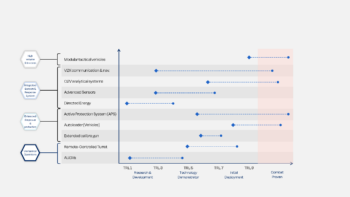
Figure 5: Overview of Starburst’s TRL assessment of key technology areas for land-based systems
The emerging enablers encompasses enabling technologies for both upgrades and standalone capabilities. Advanced sensors and Combat Cloud components, such as V2X communication and C2V analytics, fall into this group. These systems are emerging as critical tools for improving situational awareness, decision-making, and vehicle autonomy. While nearing deployment, their effectiveness depends on overcoming challenges such as resilient communication in contested environments.
The disruptive innovators include low-TRL technologies with longer development timelines, such as directed energy systems and autonomous unmanned ground vehicles (A-UGVs). While directed energy weapons hold promise for counter-UAS and other applications significant hurdles surrounding beam control, mobile energy supplies and environmental performance remain. Similarly, A-UGVs face technical challenges in navigation, situational awareness, and communication resilience, as well as ethical considerations, limiting their current battlefield utility.
To address the challenges highlighted by recent conflicts and to increase technology readiness, NATO countries and allied militaries are investing heavily in modernizing their land-based systems. These efforts are reflected in a wide range of development programs targeting combat, tactical, and support vehicles. The following section explores key ongoing and future military programs, showcasing how they aim to integrate cutting-edge innovations to ensure battlefield readiness.
V. Analysis of Key Developments & Programs
NATO armies have initiated numerous military programs to modernize land-based systems responding to modern battlefield challenges. Figure 6 illustrates key ongoing and upcoming programs across various vehicle classes, featuring single vehicle developments, multi-vehicle fleets, and systems of systems.
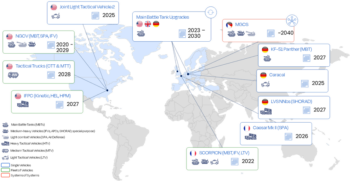
Figure 6: Overview of combat and tactical development and upgrade programs for NATO countries (non-exhaustive)
The Next Generation Combat Vehicle (NGCV) program is one of the most significant initiatives, with a lifecycle value exceeding $90 billion. It encompasses Infantry Fighting Vehicles (IFVs), Self-Propelled Artillery (SPA), and Unmanned Ground Vehicles (UGVs) while the M1 Abrams replacement, the Decision Lethality Platform (DLP), is still in its conceptual phase. This program integrates advanced capabilities like modularity, remote-controlled systems, enhanced sensors, and cyber protection.
NATO armies are upgrading existing MBTs, such as the M1E3 Abrams, Leopard 2, Leclerc (Scorpion program) and Challenger 3, to bridge the gap between third- and fifth-generation systems. Fifth-generation MBTs, like the German-French Main Ground Combat System (MGCS), face significant challenges, including funding, collaboration issues and lengthy development timelines delaying deployment readiness.
To address this gap, Rheinmetall developed the Panther KF-51, a fourth-generation MBT based on the Leopard 2A4 chassis with a 130mm main gun and advanced protection systems. Already adopted by Italy and Hungary, the Panther is set to begin production in Ukraine, providing a near-term solution to meet evolving battlefield demands.
Additional programs prioritize upgrading tactical vehicle fleets and enhancing short-range air defense systems, such as Tactical Trucks (CTT/MTT) and the Indirect Fire Protection Capabilities (IFPC), aimed at countering threats like UAS, cruise missiles, and artillery.
As NATO and allied militaries advance ambitious development programs to modernize land-based systems, startups can serve as critical suppliers and providers of disruptive technologies—especially for fields in which startups excel such as sensors, AI, and vehicle coordination and communication systems. By integrating startup-driven innovations, OEMs can enhance the effectiveness of their systems, address capability gaps, and accelerate deployment timelines, thus ensuring the success of these modernization efforts.
VI. Startups’ Role in The Land-Based Systems Industry
The global defense OEM landscape is dominated by established players like General Dynamics, Rheinmetall, and KNDS, among others, who possess the experience and governmental relationships required to develop complex systems. However, the rapid innovation seen in enabling technologies—such as sensors, artificial intelligence, and vehicle coordination and communication—is often led by startups. Large defense corporations are not well-positioned to excel in these technology fields of rapid innovation due to their wide offering and hence necessary broad investment strategies.
Figure 7 maps dual-use startups driving advancements in four key technological areas critical for integrated sensor and response systems: analytical software for Command-and-Control Vehicles (C2V), vehicle communication and navigation, advanced sensing and directed energy. Many of these technologies originate from commercial sectors, with software-focused companies leading breakthroughs. Notably AI and Machine Learning (ML), fuelled by Large Language Models (LLMs), are optimizing operations in areas such as decision-making and situational awareness, proving highly valuable for defense applications.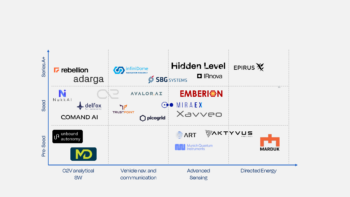
Figure 7: Startups with relevant technologies for land-based systems (non-exhaustive)
By leveraging startup innovations, OEMs can enhance their systems with cutting-edge capabilities at reduced costs. This collaboration benefits startups by providing entry into the traditionally conservative defense sector, while OEMs gain competitive advantages in future procurement cycles.
Paving the Path to Future-Proof Land-Based Systems: Innovation, Risk, and Collaboration
To remain competitive, militaries worldwide require future-proof solutions that integrate cutting-edge technologies, including autonomous capabilities, active protection systems, and resilient communication networks. Connected ecosystems, such as the Combat Cloud, will be pivotal in enhancing decision-making and operational agility.
Addressing these multifaceted challenges demands a forward-thinking approach that prioritizes innovation, cross-sector collaboration, and value-based operational outcomes:
- Value-based approach: Shift from product-centric to results-based development objectives that prioritize solutions delivering measurable battlefield outcomes. These include enhanced survivability (e.g., resilience against UAS and electronic warfare), cost efficiency (e.g., focusing on lifecycle costs and operational readiness over initial procurement expenses) and rapid adaptability to evolving threats (e.g., modular platforms and interoperable systems).
- Taking risks on cutting-edge technologies: Embrace critical low-TRL technologies with high-impact potential, such as interconnected vehicle operations (e.g., Combat Cloud and swarming), directed energy systems for UAS protection, resilient communication networks, and autonomous capabilities. Leverage the potential for external R&D to reduce risks and speed up development.
- Built & leverage ecosystem: Small, agile innovators like startups and SMEs excel in disruptive, cutting-edge environments due to their organizational agility and focused expertise. Partnerships and collaborations with these players can expand system capabilities, accelerate innovation timelines, and reduce internal R&D costs.
Starburst has been working with defense primes such as Hensoldt, Airbus, and Safran, and public stakeholders like NATO DIANA, U.K. Defense and Security Accelerator (DASA), and Space and Missile Systems Center (SMC), among others, to address these challenges by reshaping market visions, defining innovation strategies, and implementing programs to expand collaboration with innovative SMEs and startups in the defense industry. For example, through the FCAS Accelerator and Combat Cloud Accelerator, Starburst has enabled rapid advancements in disruptive sensors, deployed AI models at the edge, reduced reliance on international semiconductor supply chains, and fostered over 10 startup collaborations.
If your organization wants to tackle the challenges of future-proofing land-based defense systems, contact Starburst to explore tailored strategies for innovation and collaboration as well as leverage our expertise and proven programs, like the FCAS Accelerator, to drive operational success and gain a competitive edge.
Sources:
1. Association of the United States Army (2024): The Russo-Ukrainian War: Protracted Warfare Implications for the U.S. Army.
Available at: https://www.ausa.org/publications/russo-ukrainian-war-protracted-warfare-implications-us-army. Authors: McEnany & Roper. Last checked: 28.11.2024.
2. Australian Army Research Centre (2024): Drones in Modern Warfare: Lessons Learnt from the War in Ukraine.
Available at: https://researchcentre.army.gov.au/sites/default/files/241022-Occasional-Paper-29-Lessons-Learnt-from-Ukraine_2.pdf. Author: Molloy. Last checked: 28.11.2024.
3. Council on foreign relations (2024): How the Drone War in Ukraine Is Transforming Conflict.
Available at: https://www.cfr.org/article/how-drone-war-ukraine-transforming-conflict. Author: Thompson. Last checked: 28.11.2024.
4. European Security & Defence (2024): Unpacking Russia’s land warfare lessons from Ukraine.
Available at: https://euro-sd.com/2024/10/articles/40667/unpacking-russias-land-warfare-lessons-from-ukraine/. Authors: Nersisyan, Movsisyan, Sauve. Last checked: 28.11.2024.
5. Lowy Institute (2024): Two years of war in Ukraine: Lessons for Australia.
Available at: https://www.lowyinstitute.org/the-interpreter/two-years-war-ukraine-lessons-australia. Author: Ryan. Last checked: 28.11.2024.
6. Royal United Services Institute (2024): Preliminary Lessons from Ukraine’s Offensive Operations, 2022–23.
Available at: https://static.rusi.org/lessons-learned-ukraine-offensive-2022-23.pdf. Authors: Watling, Danylyuk, Reynolds. Last checked: 28.11.2024.
7. Royal United Services Institute (2024): Tactical Lessons from Israel Defense Forces Operations in Gaza, 2023. ISSN 2397-0286 (Online). Authors: Watling and Reynolds. Last checked: 29.11.2024
Available at: https://static.rusi.org/tactical-lessons-from-idf-gaza-2023.pdf. Authors: Watling, Reynolds. Last checked: 28.11.2024
8. The Hague Centre for Strategic Studies (2023): Lessons from land warfare: One year of war in Ukraine.
Available at: https://hcss.nl/wp-content/uploads/2023/02/Lessons-Learned-Paper-English-Version-Final.pdf. Authors: Mertens, de Heer, et al. Last checked: 28.11.2024.
9. The Washington Post (2024): What the Pentagon has learned from two years of war in Ukraine.
Available at: https://www.washingtonpost.com/national-security/2024/02/22/ukraine-war-pentagon-lessons-learned/. Author: Alex Horton. Last checked: 28.11.2024.
10. US Army War College (2024): A Long, Hard Year: Russia-Ukraine War Lessons Learned 2023.
Available at: https://publications.armywarcollege.edu/News/Display/Article/3890256/a-long-hard-year-russia-ukraine-war-lessons-learned-2023/. Authors: Hackett & Nagl. Last checked: 28.11.2024.
Starburst 2025 © All Rights Reserved

